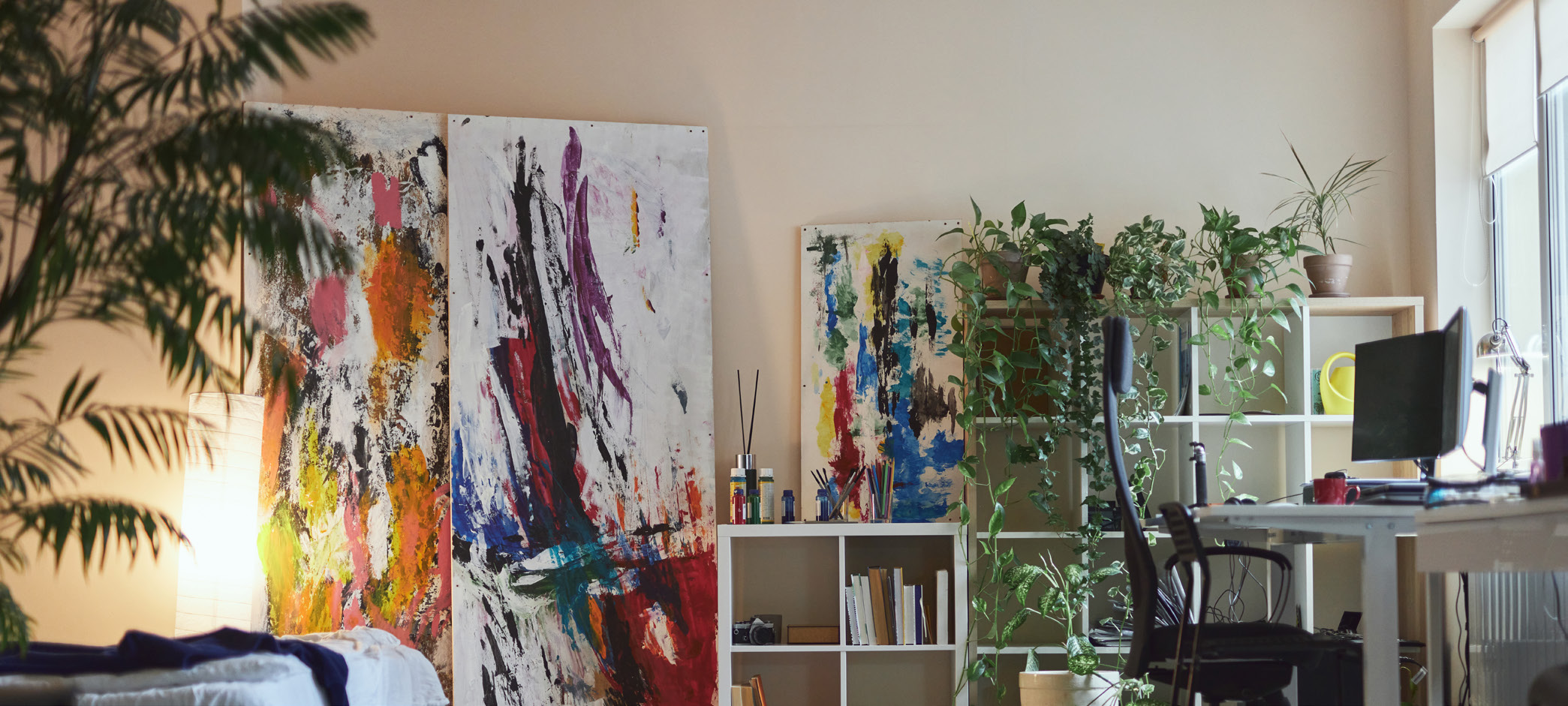What to look for in
a studio space
- by Always Art Staff


When you are in the market for a studio space, you should consider some criteria before you choose where to sign a contract. Studio spaces vary in size, amenities, and price, so it’s important to understand the options available where you live. Think about it in a way that is similar to how you would approach finding an apartment to rent.
Here are the main factors to keep in mind when choosing your studio space:
Size and layout
Make sure to choose a space that fits the needs of your specific practice. If you make small drawings while sitting at a desk, you will have different needs than an artist who makes enormous paintings or requires a woodworking shop to make carvings. If you work with mixed media, you may need to find various spaces for each aspect of your work to accommodate sculptural needs like wood, metal, or plaster casting.
The layout of the space will also make a difference in terms of the natural lighting, access to a sink, and other factors. If you make large paintings, you’ll need to be sure you have large continuous walls, and if you need to hang anything on the wall, make sure the space has suitable furnishings.
Lighting
Lighting will set the space’s tone and impact how practical the space is for making work. Many painters will want a natural light option, but all artists should ensure their studio space has lamps or overhead lights for detailed work or evening work. Not every studio space will have a window, so if that’s important to you, you’ll need to choose accordingly.
Location
Pick a location that makes sense for your lifestyle. If you live in a city, pick a studio that is easily accessible via public transportation or within walking distance from your residence. If you have a car, choose a location that has parking spaces. Be sure to also consider safety and security; don’t pick a studio space vulnerable to theft or other damages—your artwork and materials are all valuable, and you don’t want to risk yourself or your safety.

Noise level
Studios can be noisy depending on the building’s proximity to traffic or open floor plans with more social atmospheres. This is also something to consider if you plan to share a space with another artist. If you require absolute silence, be sure you are going to a building that accommodates those needs and that you are potentially picking a space with a door and full-height walls.
Utilities and amenities
Depending on the climate where you live, ensure your studio has heat and air conditioning so that it is comfortable to work there for long hours throughout the year. Also, ensure there are facilities like a bathroom, storage, or a mini kitchen. Additionally, if you need particular tools associated with your medium, seek out a space or facility with those options (like woodshops, paint slop sinks, kilns for ceramics, etc.) And, of course, make sure the building has amenities like Wi-Fi and electricity.
Cost
All of these factors will result in various price points, so go in with an understanding of your budget. Make sure your expectations meet what the market can offer, but also acknowledge what you would be giving up by saving money (i.e., trading heat and air conditioning for a lower price).
Community
Identify the type of studio community you’ll want to be part of. Are the other artists in the building people who you would like to network with and potentially collaborate with? Pick a place that has individuals at your level and above so that you can get inspired, learn from your peers, and take advantage of community events and open studios or exhibitors. Pick a place that offers these extras and doesn’t leave you isolated.
